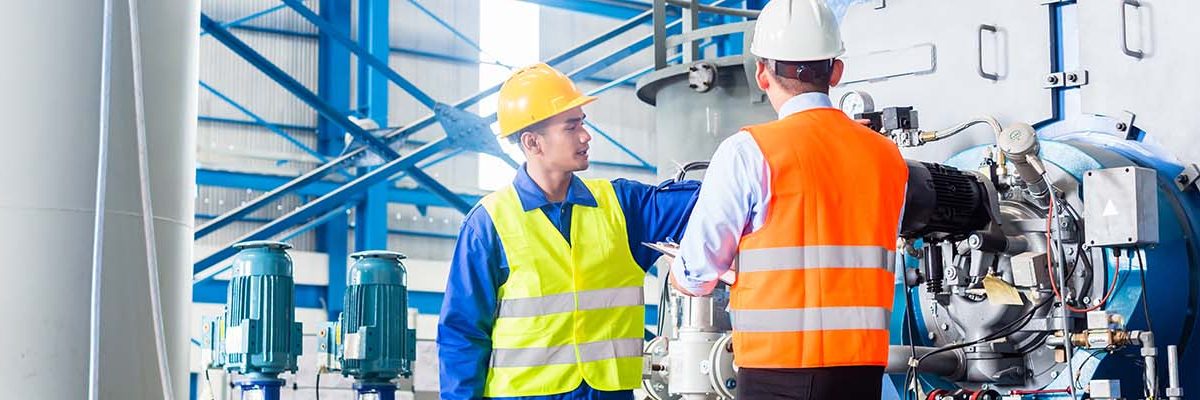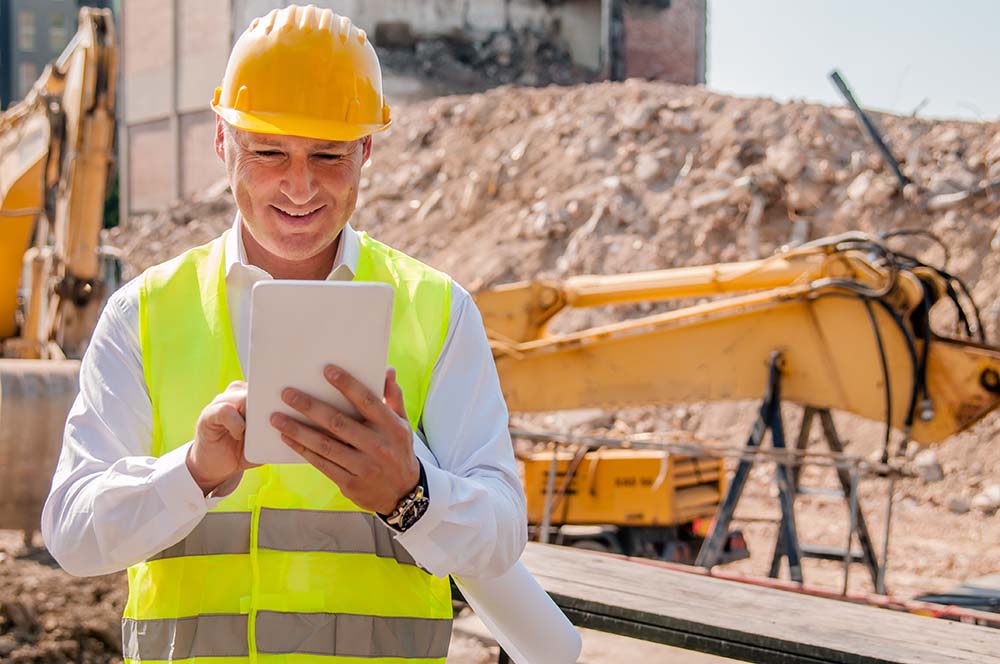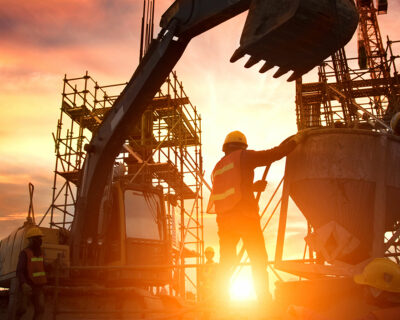
5 of the Top Safety Risks in the Construction Industry
If you take a look at accident rates from many business sectors, you will notice that construction is among the most dangerous. This is no surprise, considering all the risks found on project sites such as working at heights, heavy machinery, hot surfaces, high-voltage wiring, and the list goes on. The bottom line? Safety must be taken seriously in the construction industry, or accidents are bound to happen.
Each year, OSHA and the US Bureau of Labor Statistics collaborate to give us detailed accident reports by industry and by occupation. As you might guess, construction is among the sectors with the most injuries and fatalities:
- The US BLS reported 3,229,200 work-related injuries and illnesses in 2020 (non-fatal), and 174,100 of them were in the construction sector. There were only five sectors with more injuries and illnesses reported.
- Construction is also the industry with the largest number of fatalities: Of the 5,333 casualties reported for 2019, 1,061 happened in construction (one in every five).
We recognize these numbers can be scary when you’re in the construction business, but your company can make a huge difference with an adequate safety program. Here we will talk about the top 5 risks in construction, and what you can do to avoid them.
1) Skills and Labor Shortage
The construction industry creates many jobs, and governments will proudly report this on the news. However, are all construction workers qualified for their job? Unfortunately, many business owners believe the cost of skilled labor is too high, and they may look for cheaper options. Some skills are also hard to find during a construction boom, and contractors may hire less qualified workers in an attempt to meet their deadlines.
Many people have the wrong impression that learning a construction job is easy, but they underestimate the hazards and safety requirements. Contractors can’t assume their workers will know the ropes just by experience, and sending them to projects without training is a huge risk. Hazards are everywhere in project sites, and many of them are undetectable by human senses.
- With safety training, construction workers can learn about the main risks in project sites and how to spot them.
- They will learn about personal protective equipment (PPE), which is actually dangerous when used incorrectly.
- Safety training gives you an opportunity to brief workers for specific projects, covering risks and safety procedures.
2) Project Performance
If you have ever managed a construction project, you will agree it’s a balancing act. You must meet the project scope and technical specifications while having the constant pressure of a budget and deadline. Construction is also an industry with relatively small margins, which leaves little room for error.
Some contractors make the mistake of hiring unskilled labor when facing a tight budget, or when they need more workers to meet a deadline. However, this decision puts everyone at risk, and we aren’t talking about accidents only. Unqualified workers are more likely to make mistakes, which means redoing work and unplanned costs. Contractors also run the risk of going over budget, and they could even deal with lawsuits.
One severe accident can be enough to erase all your profit from a construction project while delaying it for weeks or months. However, even when there are no accidents, unskilled labor often slows down projects and drives up their cost.
3) Health and Safety Problems

We could write an entire book about the health and safety risks in construction. There are many physical hazards for workers, which include heavy equipment and work at height. Also consider that most construction projects are outdoors, which means the weather is a constant threat. There are also tools that can injure you severely and hazardous materials with health risks.
Would you step into a project site without any safety training? When workers are aware of the health and safety hazards around them, a lot of accidents can be prevented. This is especially true when dealing with invisible threats like electricity, heat, and harmful gases. And knowing the risks of heavy equipment will help you avoid them.
4) Subcontractor Issues
A single construction company will rarely have all the skills needed for a project, and this is why managing subcontractors is so important. Major projects are normally awarded to a general contractor, who hires subcontractors for specialized areas like heating and plumbing. Managing safety can be challenging when there are subcontractors involved since you have workers from different companies on the same job site. You must make sure all participants are on the same page when it comes to safety since accidents can hurt anyone. Safety should be discussed clearly before signing any contracts, and you can ask subcontractors to complete the same onboarding and orientation process that is required for direct employees.
Picking subcontractors carefully is important for your safety record. Your company can have an excellent safety program and many years with zero accidents, but you will be responsible if one of your subcontractors causes a problem.
5) Construction Site Protection
Even when construction workers follow your safety program to a tee, new hazards may emerge when nobody is watching. Some projects with tight deadlines are active 24/7, but most of them are empty on nights and weekends. Without constant protection, a construction site becomes a tempting target for theft and vandalism. Harsh weather can also make a project site more dangerous overnight.
As a bare minimum, construction projects should have fences and security guards. You should make sure the site has enough lighting at night, and you can keep track of materials with inventory management software. Video surveillance is a great way to keep threats at bay while providing guards with a reliable communication method.
Construction workers should start their day with an inspection, even when everything seems normal. This way you can detect any hazards that emerge when the project is empty, and they can be eliminated before an accident happens.
Conclusion
Construction is a dangerous business, but many accidents can be avoided when your workers are qualified for the job. We’re aware that some skills are hard to find, especially when many other contractors are looking for them. However, when you can’t hire someone with the exact qualifications needed, you always have the option of training a promising candidate. A Learning Management System like BIStrainer can help you create the ideal training program for each job.
Unskilled labor brings high risks to construction projects, and it’s not an option for responsible contractors. In the best-case scenario, you might deal with project delays, expensive redoing of work, and lower quality. However, lack of training can also lead to fatal accidents and legal action against the contractor, along with huge costs.
Safety training is key, and workers can avoid many accidents by simply being aware of hazards. You should also make sure that subcontractors follow your safety program, and you can actually include this as a contract requirement. Project sites should also have all the safety and security they need, even when empty. By being aware of the risks and successfully completing training, you can be sure to reduce accidents and have a safer workday!
Construction Safety Training – In
One Convenient Package!
Construction work requires a lot of training to keep employees safe. That’s why we’ve put together a comprehensive package that includes a great selection of common training topics for one low monthly price. View all the courses below!




























